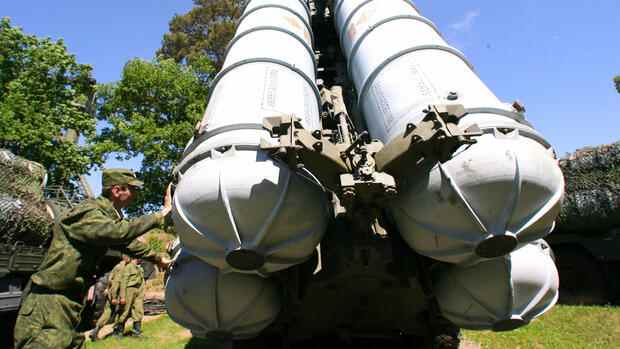Ulrich Kühn heads the research area for arms control and new technologies at the Institute for Peace Research and Security Policy (IFSH) and is well versed in various weapon systems. After analyzing images from social media and speaking to experts, he says the picture is “relatively clear” at this point.
These are his answers to the most important questions.
What do we know about the rocket model?
“We are assuming at this point that it is an S-300 missile. This is an air defense system made in Russia,” says Ulrich Kühn. The system comes from the Soviet Union and has been sold by Russia to various countries, including Ukraine, for many years. “Ukraine itself has the S-300 systems and is using them in this war to protect itself against Russian missiles.”
Top jobs of the day
Find the best jobs now and
be notified by email.
The system is suitable, for example, to protect the city of Lviv or the power substation there – the Russians are known to attack such civilian systems. “And they did that again yesterday with hundreds of rockets,” says Kühn.
How exactly is this rocket controlled?
The rocket is usually connected to a radar guidance system, says the expert and explains: “The radar says a rocket is approaching, maybe a cruise missile from the Russian side. And then you usually shoot down two of these S-300 missiles to destroy the cruise missiles in flight and effectively intercept them.” The missile has a target function, for example to track cruise missiles. As far as he knows, it is no longer possible to redirect the rocket after it has been launched.
The scientist heads the research area for arms control and new technologies at the Institute for Peace Research and Security Policy (IFSH).
How accurate is this type of missile?
“These missiles are quite accurate. But we are talking about a system that is around 40 years old: Of course, such rockets sometimes fly in a different direction,” says Ulrich Kühn. But he also points to another risk: “It happens that such a rocket does not hit its target and flies on.”
This scenario seems plausible in the context of the missile impact in Poland. Kühn says: “If a missile flies towards Lviv from the north, then the Ukrainian missile defense system shoots down the S-300 missiles towards the north. If they don’t hit their target, they’ll keep flying and may end up exactly where a missile has now tragically killed two Polish citizens.”
How likely is it that the missile that landed in Poland was a misfire?
The expert also thinks that is conceivable: “It is possible that the tracking is not working properly. Technical errors happen – especially on a day like yesterday when more than a hundred missiles are flying, not counting the interceptor missiles.” He points out that there have always been cases of misfires in the past.
NATO Secretary General gives the all-clear: “No indication of a deliberate attack”
It was initially unclear where the rocket was launched: Are rocket trajectories not tracked – similar to airplanes?
Tracking is also possible with rockets – for example via a ground radar system that Poland, Slovakia and Germany have, says the scientist. Infrared sensor satellites, which the Americans in particular have, are significantly more powerful.
>> Also read: Explosion in Poland: What current knowledge there is about the origin of the rocket
The chance that the missile flight of the S-300 was tracked from the western side is “extremely high”, especially since the USA in the Ukraine war tracked around the clock “where the missiles start, where they fly and where they hit.” From the satellite data, it is “pretty easy to understand” where the rocket came from.
The quick reaction of the Americans by President Joe Biden and the statement that the USA assumed a Ukrainian missile allows Ulrich Kühn to come to a clear conclusion: “That means the information was already available to the Americans at the time.”
More: Rocket impact in Poland becomes a nerve test for NATO – consequences despite the all-clear
